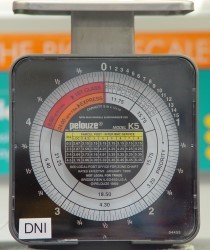How to plan an archive migration - smoothing the rough edges
In this article I would like to share some tips with you about how to plan for an archive migration. This could be a migration from PST into Enterprise Vault or Exchange, it could be archives from Enterprise Vault to a new Enterprise Vault system or even a different archiving system. The advice will (hopefully) help with any kind of archive migration!
Scale

The first thing to get a handle on in any migration is the scale of it. At the outset of the project there might be some ideas of how many PST files there are to move, or the size of PST data, or the number of archives that have to be moved, and the distribution of users and archives. That idea needs then to get more scientific, as losing a zero or two will definitely impact the overall run length of the project, and cause sleepless nights for the project team members if they are busy trying to do too much.
Products like Archive Shuttle and PST FlightDeck have great built-in capabilities to help judge the scale of migrations. For Archive Shuttle the data can be harvested from Enterprise Vault databases, and displayed in a format that allows the migration team to slice and dice the data and really get a handle of the number of archives to move, item counts, and sizes. Likewise for PST FlightDeck once the Migration Agent is deployed and reporting back statistics from end-user workstations it too can be used to slice and dice the results and dig deep to find all the very large PST files, or users that have 10 or more PSTs, for example.
It is also worth thinking about scale in terms of the impact that the migration is likely to have on the target environment. If you're migrating thousands of PSTs into Enterprise Vault, then you need to consider the grow on disk of the raw files, SQL storage needs, as well as space needed for the all-important Enterprise Vault Indices.
Getting the scale right, will definitely help with the smoothness of the project once it gets going. Looking in to that data a little bit further will help foresee some of the problems that might be lurking down the road - such very large archives, very large PST files, or PST files that are not often in the reach of a good network connection.
Capture

Figuring out how all the data is going to captured for the migration at hand is also an important step. How are the remote offices going to be processed? And those road-warriors that don't connect to the corporate network with a 'good' connection for a week or two, how will those be handled?
It's not so much of a problem when it comes to migrating archives, unless the move is out to PST or to an Exchange Personal Archive, or Office 365. All of these can happen as background tasks, and that's something that Archive Shuttle manages with ease. With the Sync and Switch approach employed by Archive Shuttle the source for the migration can still remain active even with new data being archived, whilst it is synchronised regularly to a target environment - ready for the 'switch over'.
For PST Migrations this is more difficult, but our PST FlightDeck product uses a client-side agent for assisting with this, and it's bandwidth aware and uploads are resumable.
Figuring out how to capture all of the required data, and where problems may lie in terms of connectivity will help see where different parts of the project may need to start. It is also worth remembering that you may not get free reign on the underlying network that connects the systems together, there might be the need to schedule parts of the data copying for weekends, or evenings... these are all possible with Archive Shuttle and PST FlightDeck.
Track

Almost all migrations will go on for several weeks, sometimes months. Figuring out at the start of the project how the project progress will be reported will also help with smooth running of the project. No one wants to spend 3 hours every Monday morning producing spreadsheets and graphs of migration that was done the previous week, it is just a waste of time and effort.
Products like PST FlightDeck and Archive Shuttle have a lot of different reporting capabilities and if they don't fit your needs, we'd be happy to hear about suggestions! Both products have nice dashboards that give a high level view of the progress so far from a number of different angles, and both products have several other reporting features - and even allow data to be exported in case you do want to spend time graphing it yourself.
In-Product or Out-of-Product

Many of the different concepts here can be achieved inside Enterprise Vault directly or with a bit of scripting and manipulation in Excel. Of course products like Archive Shuttle and PST FlightDeck offer many benefits in the areas I've outlined, and have many other features that you may wish to take advantage of. One of the things that must be considered is whether you want to use a 3rd party product to help smooth out some of the rough edges where Enterprise Vault's native tools and features don't quite do things 'enough'. Sometimes it's down to choice, sometimes it's down to budget - but I think it's definitely worth considering the options available.
Conclusion

I hope that the ideas presented here will be useful for the next (or your first!) migration project whether it be archive migration or PST Migration. As you can see some careful thinking up front can help with the overall running of the project. Selection of tools or products (like Archive Shuttle or PST FlightDeck) might help several different types of scenario and different types of migration, and are definitely worth considering if budget and time permits.
How do you start off migration projects? Let me know in the comments below...